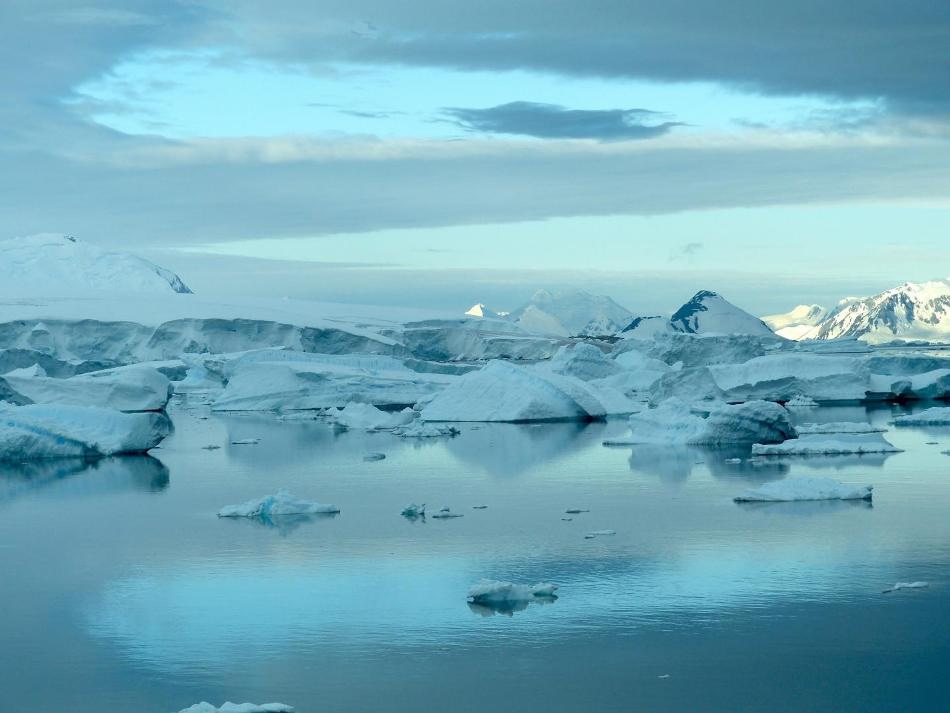Aug 30 2019
A discovery made by researchers challenges earlier beliefs of the relationship between the polar Southern Ocean, next to Antarctica, and the levels of carbon dioxide in the atmosphere.
 Sea ice and icebergs in the shelf sea environment adjacent to Antarctica. (Image credit: Mike Meredith, British Antarctic Survey)
Sea ice and icebergs in the shelf sea environment adjacent to Antarctica. (Image credit: Mike Meredith, British Antarctic Survey)
Their findings reveal that, in contrast to prevailing assumptions, biological processes far out at sea are the most crucial factors that determine how the ocean traps carbon dioxide. The results have been reported in the August 28th, 2019 issue of the journal Science Advances.
Carbon dioxide is trapped in the surface ocean and stored in the deep seas for a period of 100s to 1000s years. The Southern Ocean plays a crucial role in how this carbon dioxide is removed from the atmosphere, and being aware of how it works helps researchers understand intense climate changes in the past, for example, the ice ages, and thus better forecast future climate change.
It is generally thought that the conversion of water from light to dense—as a result of cooling at the ocean’s surface—is vital in establishing whether carbon is discharged in the atmosphere or trapped in the deep ocean. Consequently, existing research is mostly concentrated on the shallow seas immediately next to the Antarctic continent, where most of this alteration occurs.
The researchers, guided by the University of Southampton with British Antarctic Survey, University of East Anglia, and the Alfred Wegener Institute in Germany, explored the ocean circulation as well as carbon concentration of the Weddell Gyre, a region of vital significance for carbon removal from the atmosphere lying east of the Antarctic Peninsula. They examined data gathered as part of the Antarctic Deep water Rates of Export (ANDREX) project which measured the chemical, biological, and physical properties of the water in the gyre between 2008 and 2010.
By exploring this data, the researchers demonstrated that the leading factor triggering the uptake of carbon from the atmosphere to the ocean is not connected to dense water formation in the shallow seas directly next to Antarctica, but instead to biological processes further out to sea.
As phytoplankton in the gyre’s center grow then sink, they remove carbon from the ocean’s surface, causing an uptake of atmospheric carbon dioxide—a process called the “biological carbon pump.” The data considered in this research revealed unmistakably that this is the central process in the Weddell Gyre, allowing the uptake of atmospheric carbon dioxide and its transfer to the deep ocean.
The results carry implications for our understanding of how the high-latitude Southern Ocean, close to the Antarctic continent, influences atmospheric carbon and global climate on 100 to 1000-year timescales. This is important both for our understanding of climate transitions in the past, such as the ice ages, as well as our projections of future climate change.
Graeme MacGilchrist, Study Lead, University of Southampton
MacGilchrist added, “We also expect that it will help to shift the focus of future research towards the critical processes taking place in the Antarctic Gyres, rather than the historical focus on the shelf-sea regions.”
The Southern Ocean is a hugely important region for the drawdown of carbon dioxide from the atmosphere, with major impacts on global climate. This study overturns a commonly-held belief relating to how this works, and emphasises the need for joined-up biological and physical studies in the open-ocean regions some distance offshore from the Antarctic continent.
Michael Meredith, British Antarctic Survey
Meredith continued, “This will be a key priority going forward, in order to improve our ability to reliably predict future climates.”